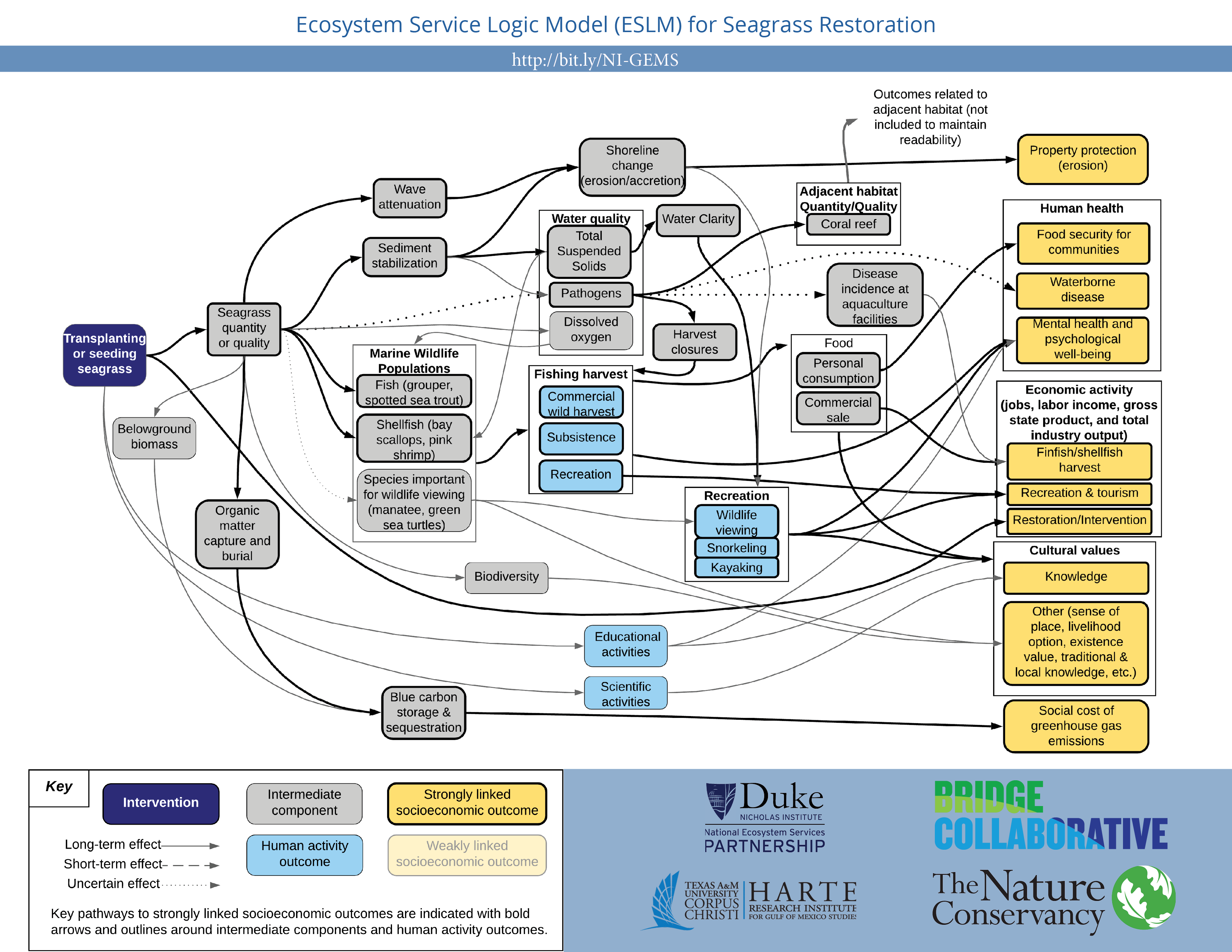Scotland's Coastal Revival: The Role Of Seagrass Restoration Projects

Table of Contents
The Ecological Importance of Seagrass in Scottish Waters
Seagrass meadows are often referred to as the "lungs of the ocean" and their importance to the health of Scotland's coastal waters cannot be overstated. These underwater ecosystems provide a wealth of ecological services, contributing significantly to the overall health and resilience of our marine environment.
Biodiversity Hotspots
Seagrass beds are incredibly biodiverse habitats, teeming with life. They function as nurseries, feeding grounds, and refuge for a wide array of species, many of which are commercially and ecologically important.
- Species found in Scottish seagrass meadows: Cod, scallops, seahorses, various crab species, numerous smaller fish species, and many types of invertebrates.
- Nursery function: The dense structure of seagrass provides shelter for juvenile fish, protecting them from predators and providing a rich food source, ensuring the continuation of fish stocks. This is crucial for maintaining healthy populations of commercially important species.
Carbon Sequestration and Climate Change Mitigation
Seagrass is a highly efficient "blue carbon" sink, meaning it captures and stores atmospheric carbon dioxide at a rate far exceeding that of terrestrial forests. This makes seagrass restoration a vital tool in mitigating the effects of climate change.
- Carbon sequestration potential: Studies show that seagrass can sequester up to 10 times more carbon per unit area than terrestrial forests, making them a crucial component of climate change mitigation strategies.
- Climate change mitigation: By absorbing vast quantities of CO2, seagrass helps to regulate atmospheric carbon levels and reduce ocean acidification, protecting other marine life and mitigating the impact of climate change on Scotland's coast.
Coastal Protection
The dense root systems of seagrass meadows stabilize sediments, reducing coastal erosion and protecting shorelines from the damaging effects of storms and waves. This natural coastal defence is invaluable.
- Wave energy reduction: Seagrass beds significantly dampen wave energy, reducing erosion and protecting coastal infrastructure.
- Economic benefits: The protection provided by seagrass reduces the need for expensive artificial coastal defenses, offering substantial economic benefits to coastal communities. This includes safeguarding property, infrastructure, and tourism revenue.
Current Seagrass Restoration Projects in Scotland
Several organizations and initiatives are actively involved in seagrass restoration Scotland, employing innovative techniques to restore and protect these vital ecosystems.
Project Examples
Several exciting projects are underway across Scotland:
- Project Neptune (example): Located in [Location], this project uses [Method - e.g., seed planting] to restore seagrass beds. [Link to Project Website]
- Seagrass Restoration Initiative (example): Based in [Location], this initiative focuses on [Specific aspect, e.g., community engagement]. [Link to Project Website]
- [Another Project Name]: This project employs [Specific technology or approach]. [Link to Project Website]
These examples showcase the diversity of approaches being employed, highlighting the collaborative effort to restore Scotland's seagrass meadows.
Innovative Restoration Techniques
Seagrass restoration Scotland is benefiting from advancements in technology and restoration techniques:
- Drone surveys: Drones equipped with advanced cameras are used for accurate mapping of seagrass beds, providing crucial data for restoration planning and monitoring.
- Advanced seed collection and cultivation: Scientists are developing improved methods for collecting and cultivating seagrass seeds, enhancing the success rate of restoration efforts.
- Hydro-seeding: This technique involves dispersing seagrass seeds directly into the water, utilizing currents to distribute them effectively.
Challenges and Limitations
Despite the progress, seagrass restoration faces significant challenges:
- Funding limitations: Securing sufficient funding for long-term restoration projects remains a key challenge.
- Pollution: Nutrient pollution and other forms of pollution can negatively impact seagrass growth and survival.
- Climate change impacts: Rising sea temperatures and ocean acidification pose a threat to seagrass ecosystems.
- Human activity: Activities such as dredging and anchoring can damage seagrass beds.
Addressing these challenges requires collaborative efforts from government, researchers, and the public.
The Future of Seagrass Restoration in Scotland
The future of seagrass restoration in Scotland depends on continued investment, innovation, and public awareness.
Community Engagement and Education
Engaging local communities is crucial for the long-term success of seagrass restoration projects:
- Citizen science initiatives: Involving volunteers in monitoring and restoration activities.
- Educational programs: Raising public awareness about the importance of seagrass and its role in coastal ecosystems.
Policy and Funding
Government policies and funding are essential to support and scale up coastal restoration efforts:
- Marine Protected Areas: Expanding the network of Marine Protected Areas to safeguard seagrass habitats.
- Increased funding for research and restoration: Investing in innovative research and restoration techniques is vital.
Long-Term Monitoring and Evaluation
Ongoing monitoring is crucial to assess the effectiveness of restoration efforts and inform future strategies:
- Regular surveys: Monitoring seagrass cover, density, and overall ecosystem health.
- Data analysis: Using data to understand the factors influencing seagrass growth and to adapt restoration techniques.
Conclusion
Seagrass restoration projects are integral to Scotland's coastal revival, offering substantial ecological, economic, and climate benefits. By investing in innovative techniques, engaging communities, and implementing effective policies, Scotland can lead the way in protecting and restoring these vital underwater ecosystems. Let's continue supporting and promoting seagrass restoration in Scotland, and coastal restoration in Scotland to ensure a healthy and vibrant future for our coastlines. Learn more about how you can contribute to seagrass restoration projects in Scotland and help protect this vital resource.

Featured Posts
-
 Body Language Reveals The Truth Decoding Blake Lively And Anna Kendricks Tense Encounters
May 04, 2025
Body Language Reveals The Truth Decoding Blake Lively And Anna Kendricks Tense Encounters
May 04, 2025 -
 Corinthians X Sao Bernardo Horario Do Jogo E Onde Assistir
May 04, 2025
Corinthians X Sao Bernardo Horario Do Jogo E Onde Assistir
May 04, 2025 -
 Robertson Eyes Quick Finish Against Rodriguez In Des Moines
May 04, 2025
Robertson Eyes Quick Finish Against Rodriguez In Des Moines
May 04, 2025 -
 Sesame Street And Laugh In Star Ruth Buzzi Dies At 88
May 04, 2025
Sesame Street And Laugh In Star Ruth Buzzi Dies At 88
May 04, 2025 -
 Office365 Security Breach Crook Makes Millions Targeting Executives
May 04, 2025
Office365 Security Breach Crook Makes Millions Targeting Executives
May 04, 2025
Latest Posts
-
 Nyc Filming Bradley Cooper Directs Will Arnett For Is This Thing On Photo 5133886
May 04, 2025
Nyc Filming Bradley Cooper Directs Will Arnett For Is This Thing On Photo 5133886
May 04, 2025 -
 Is This Thing On New Photos Show Bradley Cooper Directing Will Arnett In Nyc
May 04, 2025
Is This Thing On New Photos Show Bradley Cooper Directing Will Arnett In Nyc
May 04, 2025 -
 Izmena Druzhby Bredli Kuper I Leonardo Di Kaprio Prichina Konflikta
May 04, 2025
Izmena Druzhby Bredli Kuper I Leonardo Di Kaprio Prichina Konflikta
May 04, 2025 -
 Raskol Druzhby Pochemu Kuper I Di Kaprio Perestali Obschatsya
May 04, 2025
Raskol Druzhby Pochemu Kuper I Di Kaprio Perestali Obschatsya
May 04, 2025 -
 Bredli Kuper I Leonardo Di Kaprio Istoriya Razrushennoy Druzhby
May 04, 2025
Bredli Kuper I Leonardo Di Kaprio Istoriya Razrushennoy Druzhby
May 04, 2025
